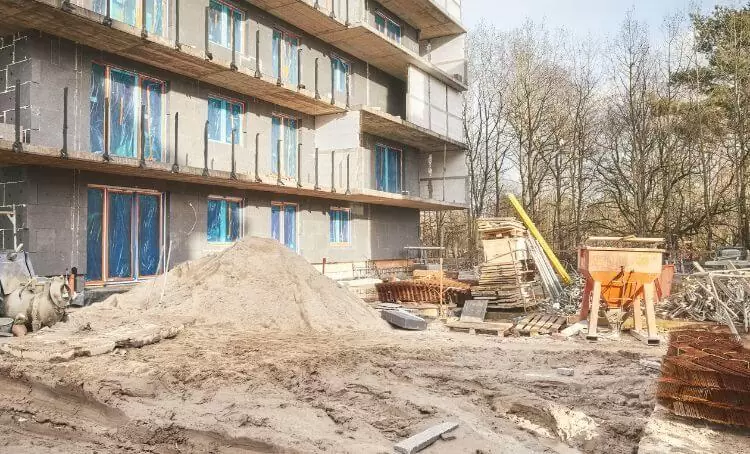A substantial percentage of the current real estate market is driven by fix-and-flip investors and potential buyers seeking to transform a hard money loan into a lucrative payday and many of them do exactly that. Although it’s not atypical to see an investor parlay a temporary rehab loan into a considerable profit, there is always an inherent degree of risk associated with the fix-and-flip industry. Many of these potential setbacks don’t have anything to do with the property itself or the collective market conditions, but in the naïve assumptions of the real estate professional. Accordingly, the following article lays out some of the most common and biggest mistakes fix-and-flip investors and house flippers make and how you can avoid them from impacting your revenue stream and potential profit.
Inaccurate Forecasting

It can be easy to underestimate the time, expenses and workload associated with a given fix-and flip project but doing so can be disastrous to your profitability. A costly mistake is when you estimate two months to rehab and resell a project, it takes five months.
Some examples of poor cost planning, general unforeseen costs, additional costs, unforeseen cost of materials and more are:
Unexpected Extras
You budget for new shingles, then find out last minute that the entire roof has to be replaced. You project that it will take one month to resell your rehabbed home, but it sits for three.
Each mistaken timeline and cost have a correlating negative effect on your ultimate bottom line.
What’s the fix?
Make sure that you build some wiggle-room into both your budget and schedule to account for unanticipated complications and delays. They’re inevitable in this industry but having the resources and flexibility to mitigate their impact is key for sustainable growth and long-term success.
Having a breakdown of costs including renovation costs, contractor costs, cost of acquisition, construction costs, repair costs and any other potential costs will help avoid common flip mistakes on your fix and flip project.
Overlooking Non-Material Expenditures
Shingles, carpet, wood and landscaping are not the only costs you will have to cover when renovating a property. To make a profit when it’s all said and done, you will have to factor in all the other non-material expenses needed to close out the transaction. On the administrative end, you’ll be responsible for footing the bill for needed appraisals, closing costs, building permits, inspections, real estate agents, property taxes and utilities.
These can all add up quickly, and if you haven’t built them into your project budget it can seriously derail your anticipated profit margin. Don’t fall into the trap of thinking the costs will automatically disappear when you sell the property. Anticipate these secondary and unexpected costs on the front-end and factor them into your starting budget to prevent any financing issues down the road.
Doing it ALL Yourself
The fix-and-flip investment strategy is particularly appealing because you can often do a large amount of the rehab work yourself saving both time and money in the process. Still, there are certain situations where you have to bring in the professionals to avoid catastrophe. There are still some rookie mistakes made regardless with the thought that doing the entire project yourself will generate a substantial profit long term. This can be risk!
For instance, some investors attempt to save a few bucks by forgoing an appraisal or inspection. Avoiding that $100-dollar professional review can end up costing you exponentially more in overlooked issues like cracked foundations, leaky ceilings or building code violations. Others bite off a bit more than they can chew and try to replace drywall or tear down whole walls on their own.
While these types of tasks may take a seasoned contractor a couple of days to complete, it may take an inexperienced real estate investor or average house flipper weeks or months to do the same job. Knowing when to rely on professionals is key to keeping projects on schedule and avoiding a shoddy work product that could impact the final resale value. There are ways to improve the value or potential profit of your fix and flip but as described above, that is not the way.
Getting Tunnel Vision
The ultimate goal of every fix-and-flip investor is to purchase the most run-down, distressed property in an otherwise perfect neighborhood and significantly increase its value via extensive, cost-effective renovations. For inexperienced investors, flippers on strict budgets and those in competitive markets, there will always be the temptation to pursue the cheapest property listed for sale. Unfortunately, those houses are typically surrounded by other run-down homes, condemned properties or in the middle of crime-riddled neighbourhoods. These lead to complicated projects that new house flipper would be wise to stay clear of.
If you are new to house flipping then it would be worth your time to take a look at our beginners cheat sheet to house flipping!
Taking on a real estate investment such as a fix and flip project just because it will cost you next-to-nothing could lead to a fix-and-flip investor’s worst nightmare: owning the perfect property in a vastly unappealing neighbourhood making it virtually impossible to sell efficiently affecting your planned exit strategy.
Do your homework before pulling the trigger on closing a deal. Make sure the surrounding community is appealing to would-be homebuyers and resist the draw of below-market deals that could be a waste of time and money in the long run.
It’s important to partner with a trusted lender who can help guide you through the process. When you borrow from Express Capital Financing, not only are you getting access to capital, you are also getting access to a team of experts who have your best interest at hand.
Not Giving Yourself Enough Time
Before you can even start making money off the renovation, you have to find the right property which often takes months. Once you have purchased the house (hopefully at the right price!) and are ready to renovate, there will be demolition and construction that has to take place which adds more time on top of that.
If you decide to outsource the work, not only will it cost more money and reduce your profit, but it will also require more time for you supervise the contractor’s activity.
Once all of the work has been completed, inspections need to be made in order for your property to comply with local building codes before it can be sold. All these added tasks quickly take away precious hours from your day-to-day life and present an obstacle if you have other commitments such as a full-time job or family responsibilities.
Don’t Overpay for the house

Investing in real estate should never be a race to the finish line. The majority of fix-and-flip investors are on tight timelines and budgets, but it’s important to keep in mind that a rushed project could result in costly mistakes.
A common issue is even with the best laid plans, unexpected problems can arise such as an inspection showing issues or the discovery of mold or structural issues that could add time and money to the project.
This is why it’s important to be realistic in your plans and create a budget that accounts for unexpected costs. By doing this you can ensure that the chances of having to dip into other resources to finish the job are significantly minimized.
We created an article to help real estate investors evaluate the worth of a fix and flip property so that this mistake doesn’t happen!
Not Having an Exit Strategy
Fix-and-flip projects come with a timeline, and that timeline should be realistic. If you’ve never done a fix-and-flip before, it may be best to start with something smaller and manageable whilst bearing in mind the pitfalls of cheap houses. This will help you get into the rhythm of managing the project, ordering materials, hiring contractors and other tasks related to rehabbing a property.
As noted previously, it is worth understanding why they are the cheapest houses in the neighbourhood prior to purchasing. A cheaper property does not always create a profitable real estate asset.
Once you have a few projects under your belt, you’ll be better prepared to take on larger-scale projects with confidence.
The key is to ensure that you’re not biting off more than you can chew in terms of project size or budget.
By taking the time to plan ahead and avoid common mistakes made by new fix-and-flippers (and even experienced ones!), you can greatly increase your chances of success when joining the world of real estate investing.






